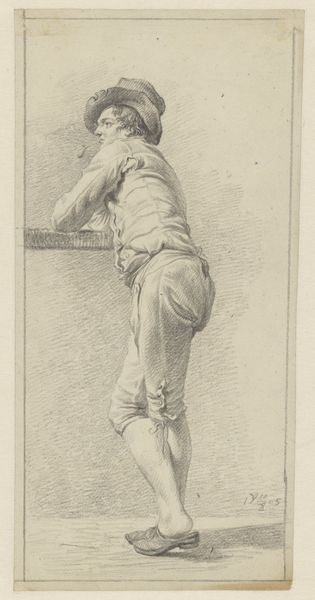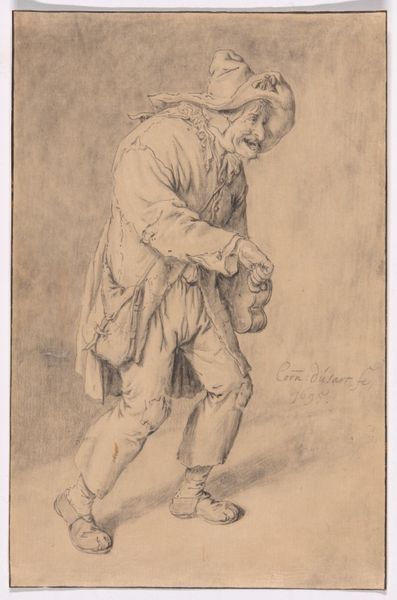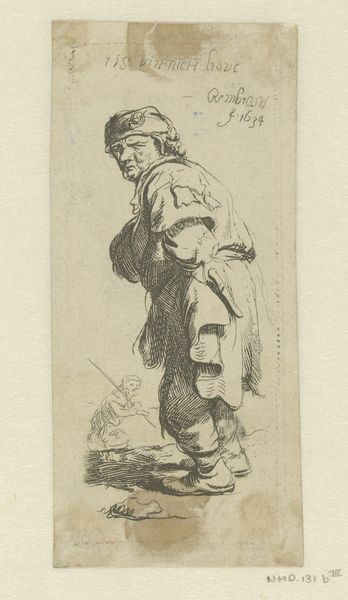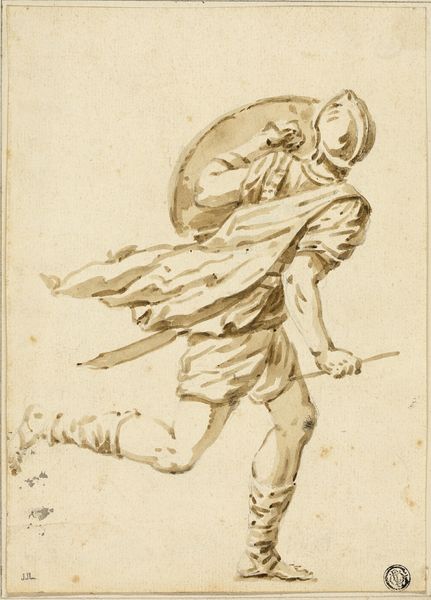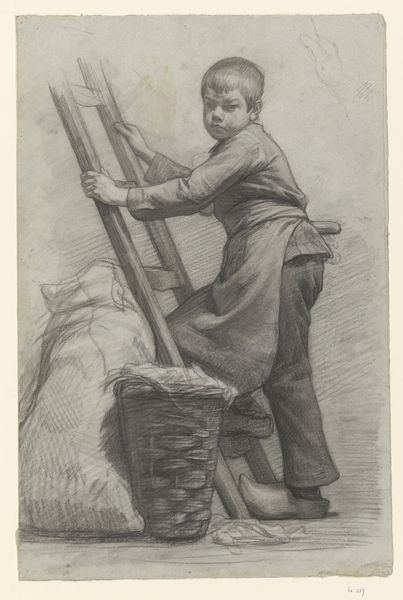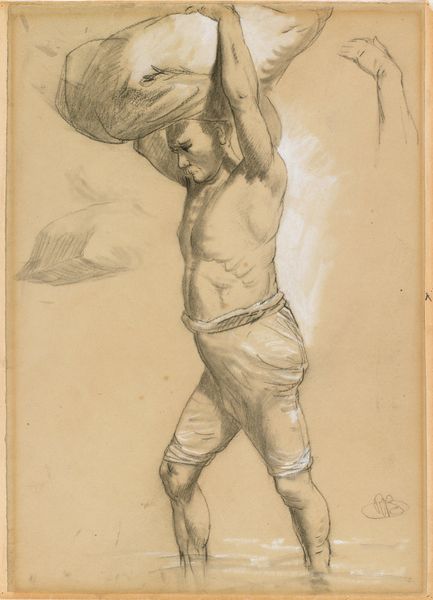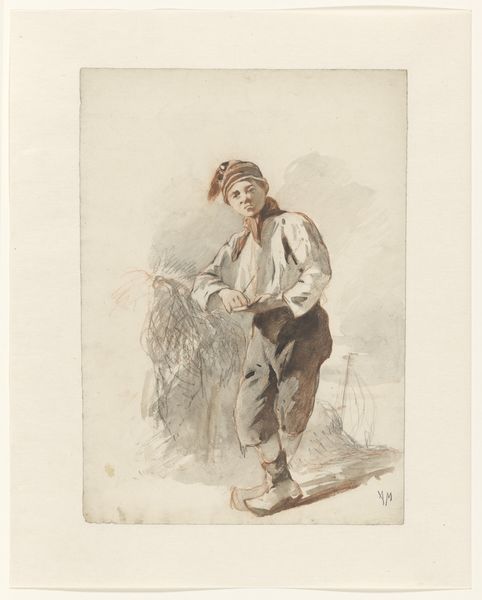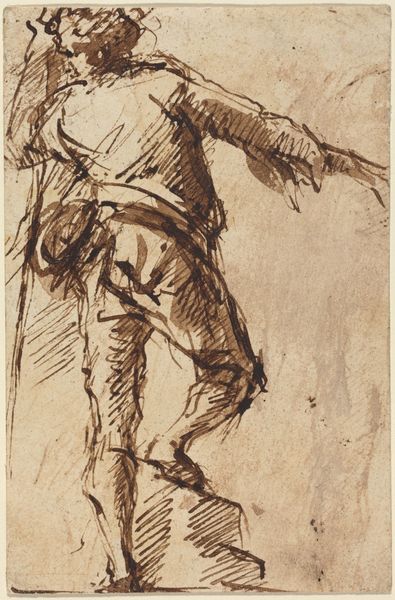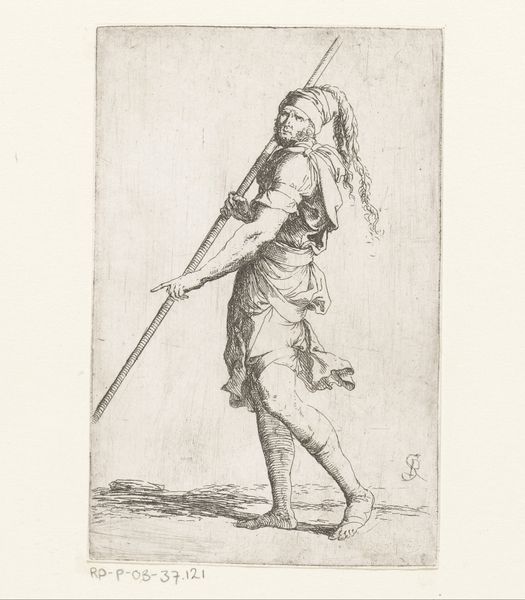
Man knielend op een blok, naar links, een touw trekkend 1809 - 1869
0:00
0:00
#
pencil drawn
#
amateur sketch
#
toned paper
#
light pencil work
#
pencil sketch
#
personal sketchbook
#
pencil drawing
#
sketchbook drawing
#
portrait drawing
#
pencil work
Dimensions: height 402 mm, width 228 mm
Copyright: Rijks Museum: Open Domain
Curator: Before us is a pencil drawing entitled "Man Kneeling on a Block, Pulling a Rope to the Left," created by Alexander Cranendoncq between 1809 and 1869. It currently resides in the collection of the Rijksmuseum. Editor: Immediately, I’m struck by the tension in the figure. There's a rawness to the pose, and the starkness of the pencil work enhances a feeling of physical strain and a curious resignation in the man’s eyes. Curator: Note how the artist has used light and shadow. The man and the block cast a soft shadow against an indeterminate wall, providing an abstract backdrop that focuses our attention solely on the figure and the act he is performing. Observe the materiality of the paper; its gentle tone supports the image but exists as an aesthetic object too. Editor: I read the rope, and the act of pulling it, as indicative of fate. Bound to a repetitive motion that achieves nothing. There's an element of Sisyphus about it, trapped in his labor. I wonder if it reflects an unseen taskmaster. Curator: Perhaps, but let's also consider the composition itself. The geometric solidity of the block grounds the figure, creating a formal balance between stability and exertion. It seems to be an exercise in representing three-dimensionality. Editor: True. The way the block is rendered – almost cubic in its perfection, does juxtapose rather oddly with the straining, organic form of the man. And, I keep being drawn back to the rope…a symbol of connection, or restriction? Is he pulling himself up, or pulling something down? Curator: Without further contextual information, any conclusion must be, by its nature, contingent. This study presents the very essence of representation—form and light rendered through graphite. Editor: A fruitful engagement. By tracing the composition and delving into the visual motifs, one can uncover a web of significance of restraint, toil and endurance within a singular figure.
Comments
No comments
Be the first to comment and join the conversation on the ultimate creative platform.
